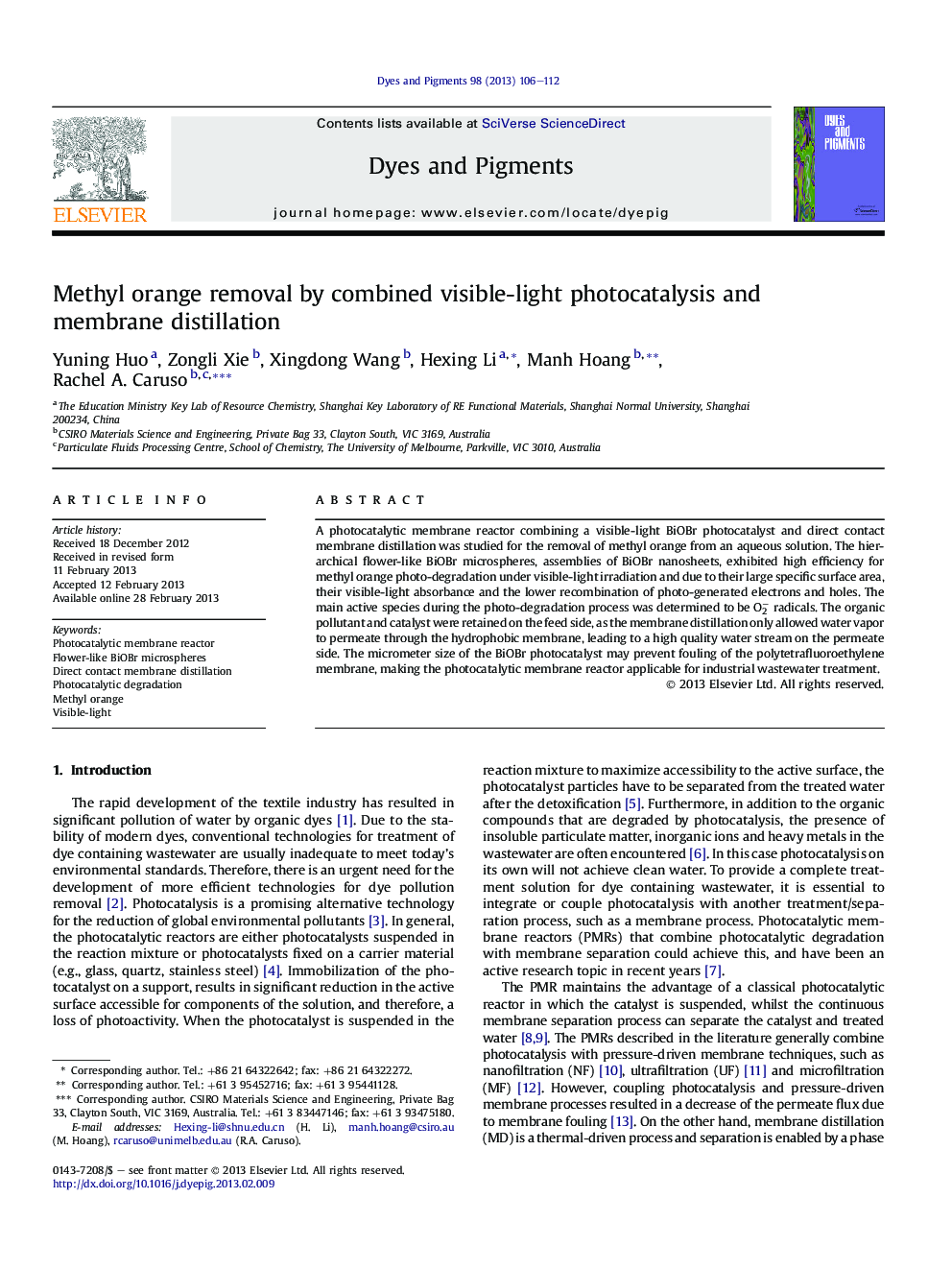| Article ID | Journal | Published Year | Pages | File Type |
|---|---|---|---|---|
| 176617 | Dyes and Pigments | 2013 | 7 Pages |
A photocatalytic membrane reactor combining a visible-light BiOBr photocatalyst and direct contact membrane distillation was studied for the removal of methyl orange from an aqueous solution. The hierarchical flower-like BiOBr microspheres, assemblies of BiOBr nanosheets, exhibited high efficiency for methyl orange photo-degradation under visible-light irradiation and due to their large specific surface area, their visible-light absorbance and the lower recombination of photo-generated electrons and holes. The main active species during the photo-degradation process was determined to be O2− radicals. The organic pollutant and catalyst were retained on the feed side, as the membrane distillation only allowed water vapor to permeate through the hydrophobic membrane, leading to a high quality water stream on the permeate side. The micrometer size of the BiOBr photocatalyst may prevent fouling of the polytetrafluoroethylene membrane, making the photocatalytic membrane reactor applicable for industrial wastewater treatment.
► Photocatalytic membrane reactor was applied to the degradation of methyl orange. ► Flower-like BiOBr microspheres achieved high visible-light photo-activity. ► The main active species for photo-degradation were O2− radicals. ► Direct contact membrane distillation led to high quality water stream. ► Micrometer size of BiOBr photocatalyst prevented membrane fouling.
